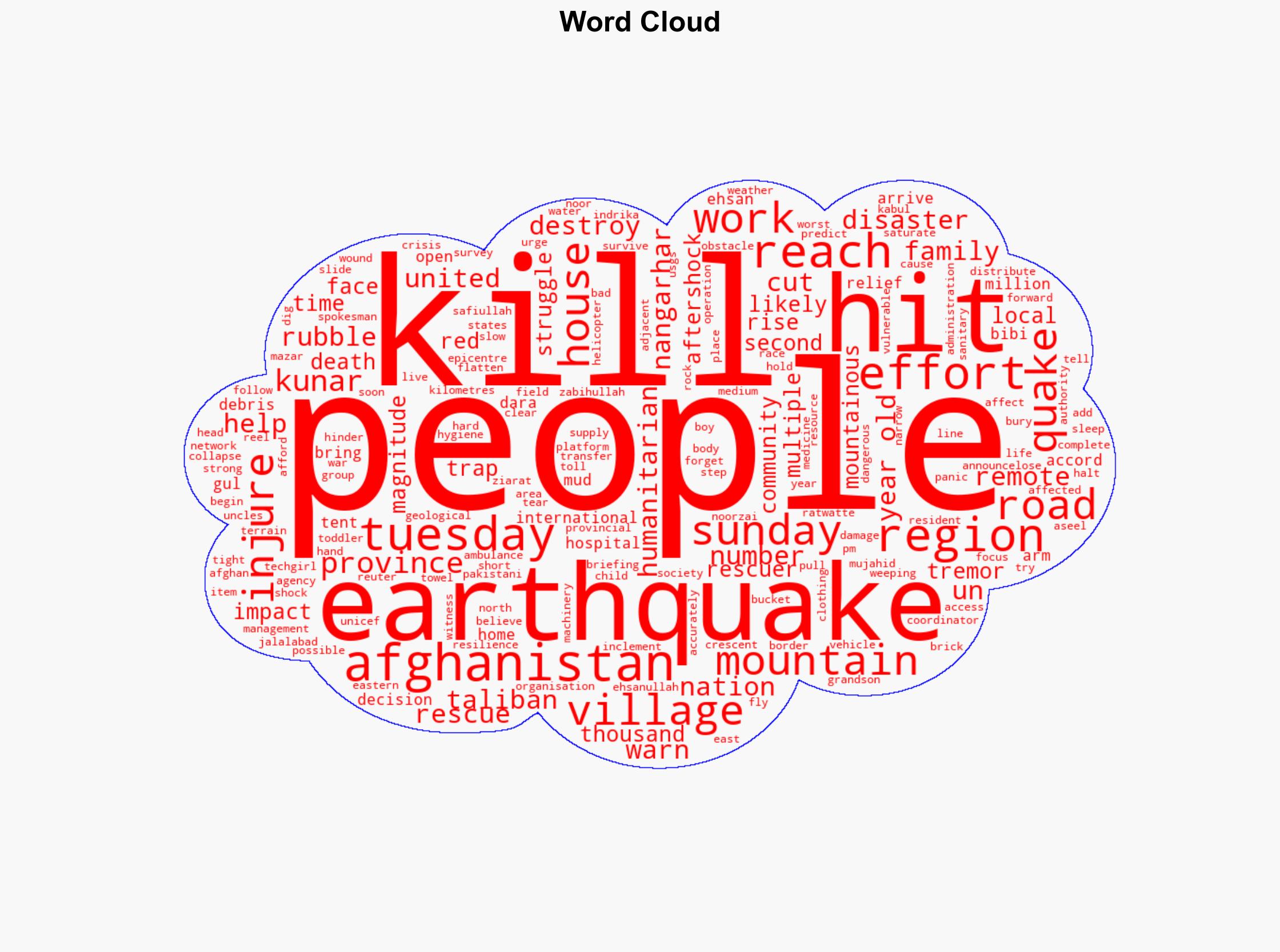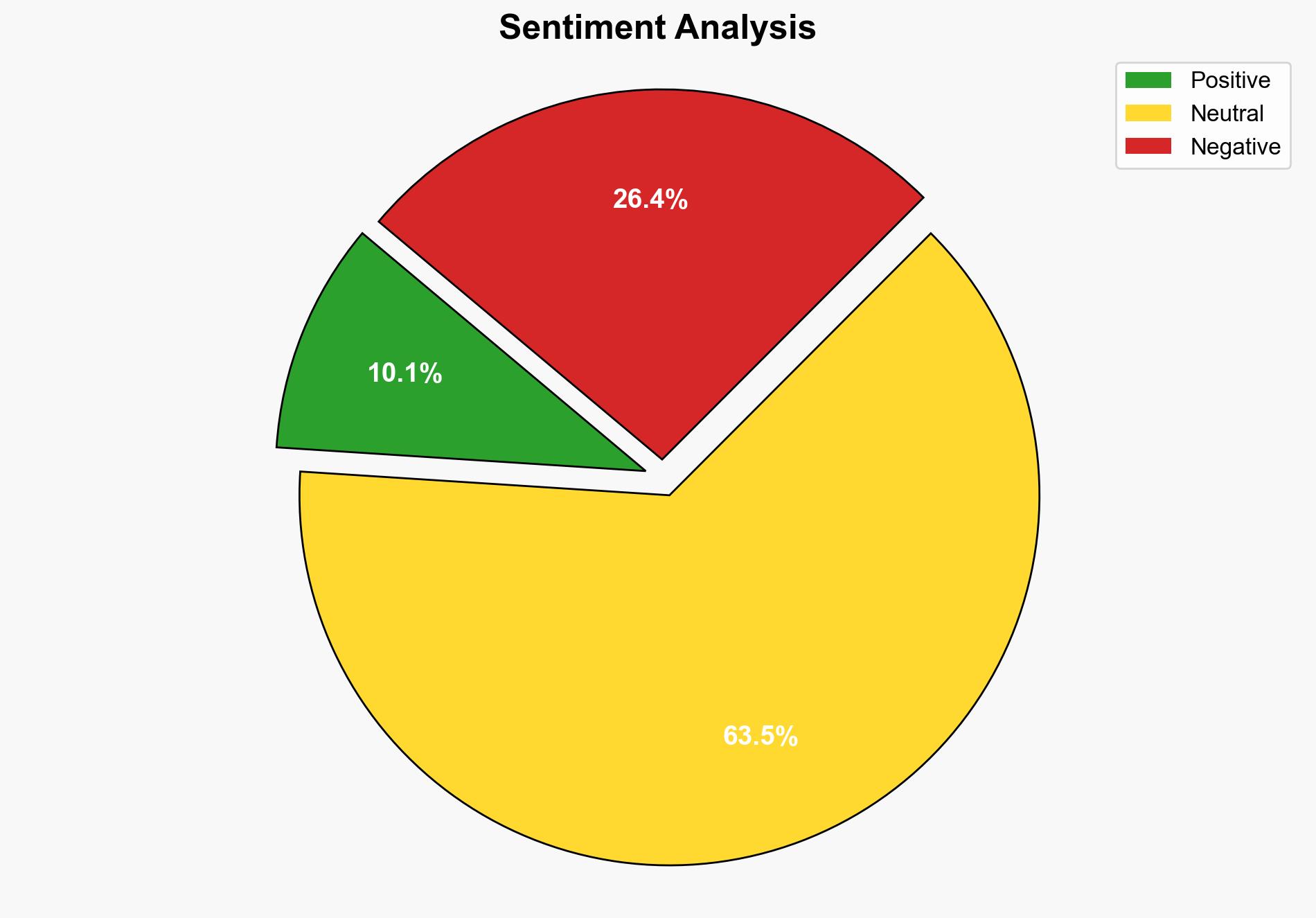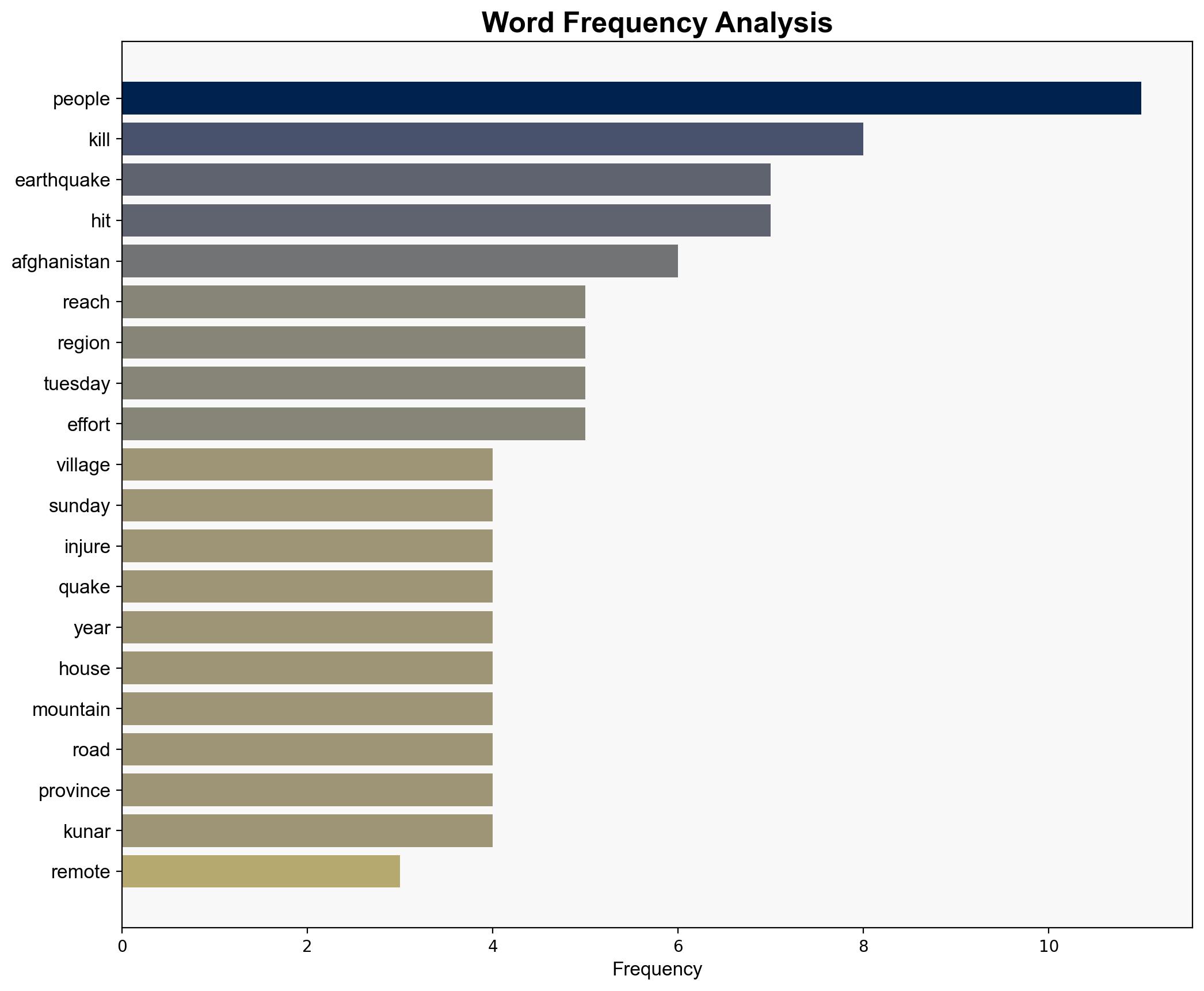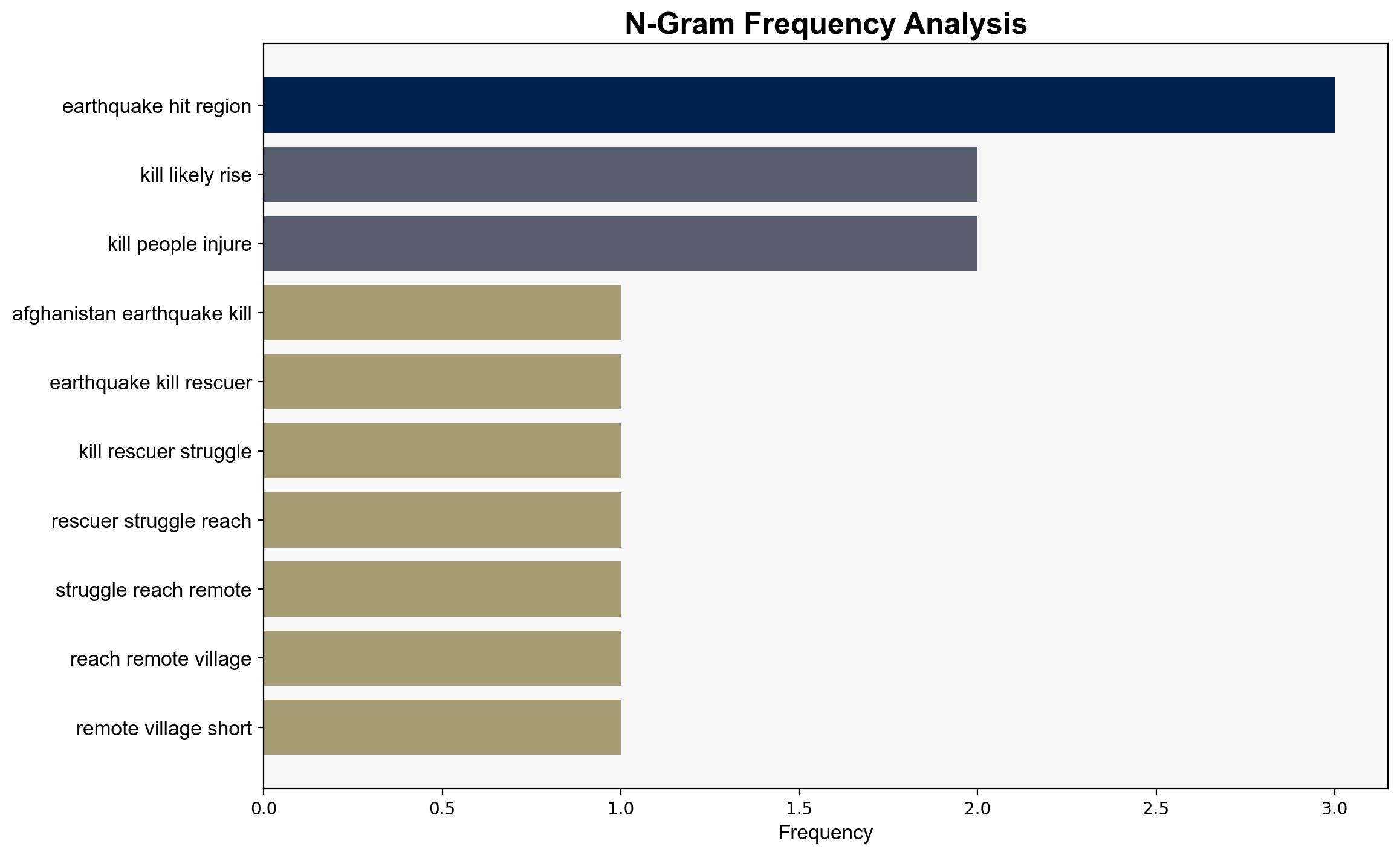Afghanistan earthquake kills more than 1400 people Taliban says – ABC News (AU)
Published on: 2025-09-02
Intelligence Report: Afghanistan earthquake kills more than 1400 people Taliban says – ABC News (AU)
1. BLUF (Bottom Line Up Front)
The most supported hypothesis is that the recent earthquake in Afghanistan has severely impacted the region’s already fragile infrastructure, exacerbating humanitarian needs and complicating rescue efforts. Confidence Level: High. Recommended action is to prioritize international humanitarian aid coordination to address immediate needs and prevent further deterioration of the situation.
2. Competing Hypotheses
1. **Hypothesis A**: The earthquake has primarily caused physical destruction and loss of life, overwhelming local and international humanitarian efforts, leading to a potential humanitarian crisis.
2. **Hypothesis B**: The earthquake’s impact is being exaggerated by local authorities to attract international aid, with actual damage and needs being less severe than reported.
Using the Analysis of Competing Hypotheses (ACH) 2.0, Hypothesis A is better supported due to consistent reports from multiple independent sources, including international organizations like the UN and Red Cross, corroborating the scale of the disaster and the urgent need for aid.
3. Key Assumptions and Red Flags
– **Assumptions**: It is assumed that the reports from international organizations are accurate and unbiased. The Taliban’s statements are taken at face value, assuming no political manipulation.
– **Red Flags**: Potential for exaggeration by local authorities to secure more aid. Limited access to remote areas may result in incomplete data on the true extent of the disaster.
– **Missing Data**: Detailed independent assessments of the affected areas are lacking, which could provide a clearer picture of the needs and damage.
4. Implications and Strategic Risks
The earthquake exacerbates existing vulnerabilities in Afghanistan, including economic instability and limited governance capacity. The disaster could lead to increased displacement, strain on resources, and potential for regional instability if aid is insufficient or mismanaged. The geopolitical dimension includes the potential for increased influence by countries providing aid, such as China and Iran.
5. Recommendations and Outlook
- Coordinate with international partners to ensure efficient distribution of aid and resources, focusing on the most affected areas.
- Monitor for signs of aid diversion or misuse, ensuring transparency and accountability in aid delivery.
- Scenario-based projections:
- Best Case: Effective aid distribution mitigates immediate humanitarian needs, stabilizing the region.
- Worst Case: Insufficient aid leads to a prolonged humanitarian crisis, increasing regional instability.
- Most Likely: Gradual improvement as aid reaches affected areas, but long-term recovery remains challenging.
6. Key Individuals and Entities
– Zabihullah Mujahid
– Safiullah Noorzai
– Ehsanullah Ehsan
– Indrika Ratwatte
7. Thematic Tags
national security threats, humanitarian crisis, regional focus, disaster response





